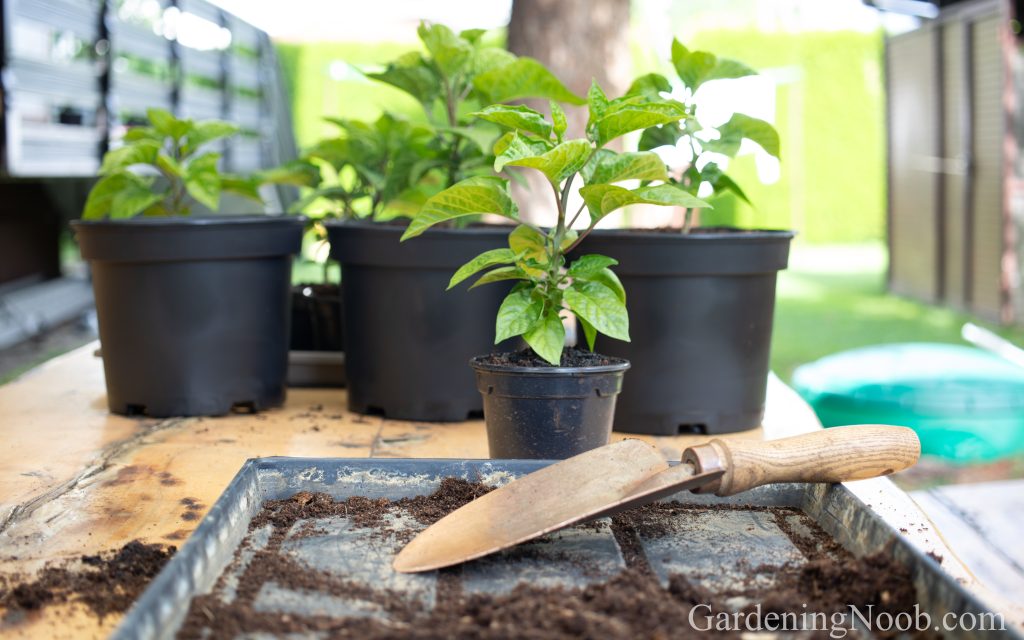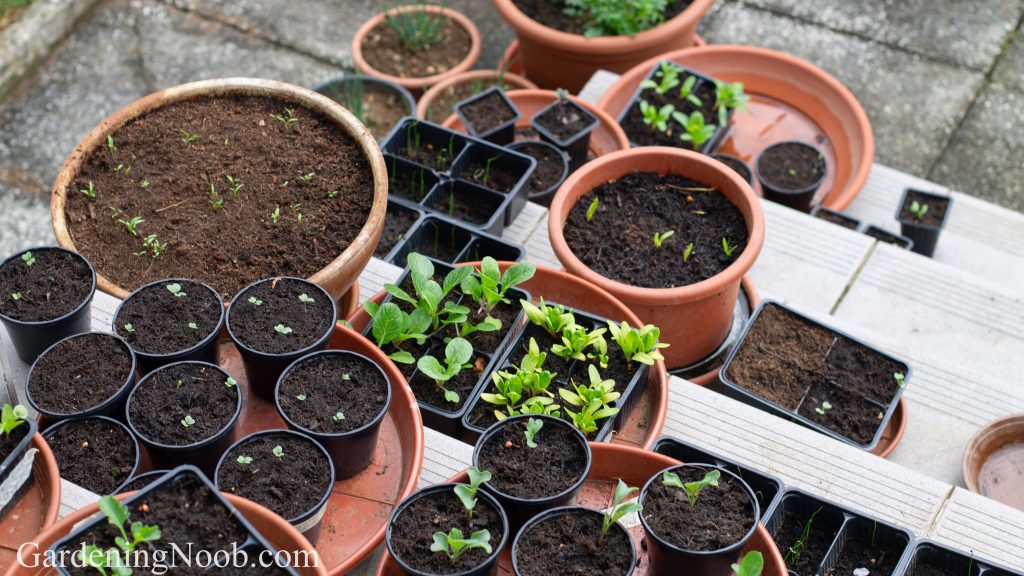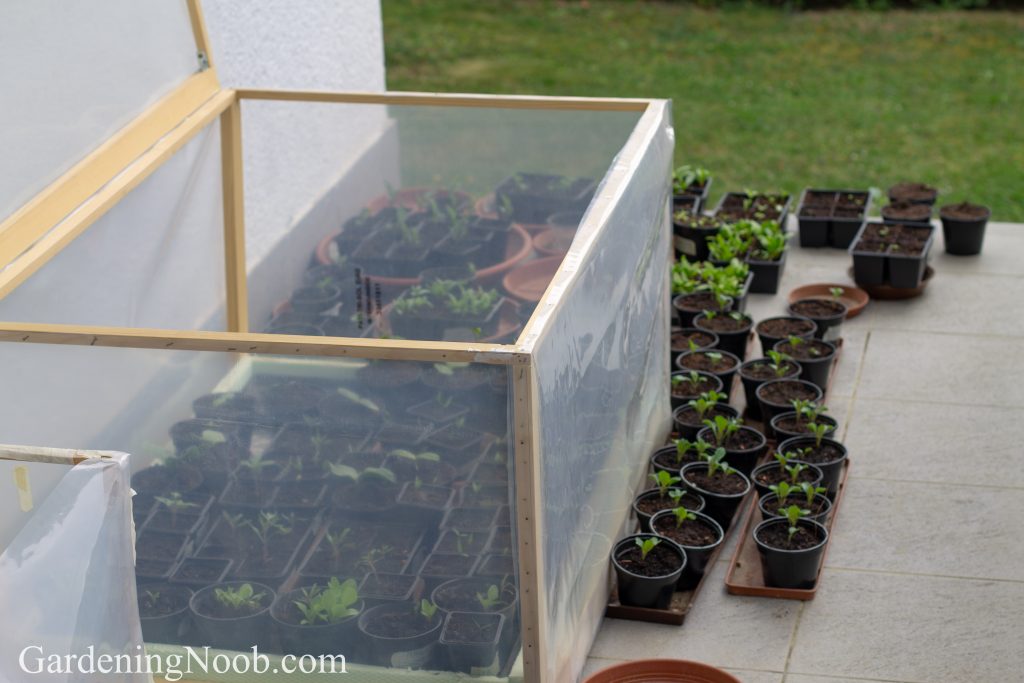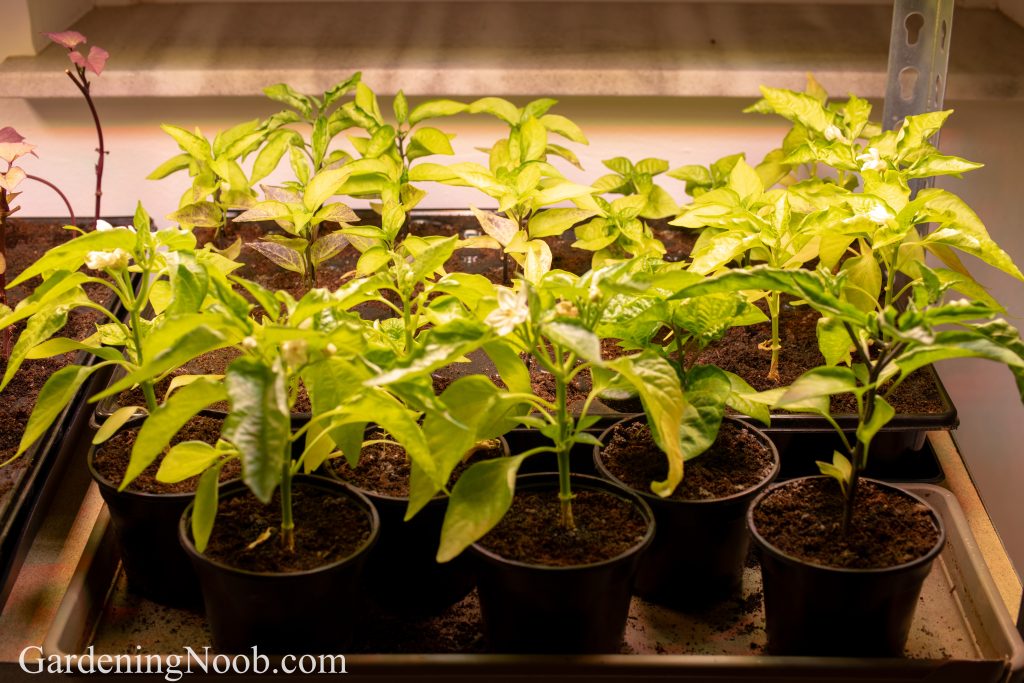Enjoy earlier, more abundant harvests with my step-by-step guide on how to start and grow vegetable seedlings from seed at home – outdoors or indoors or both

I love to grow my own vegetable seedlings from seed. I have loved it ever since I first tried it. There is something incredibly satisfying and magical about watching seeds sprout and grow into healthy, strong plants. And the benefits go well beyond just satisfaction. Starting from seed in pots and trays gives you a head start right from day one. By the time the soil warms up in mid-to-late spring, your seedlings can already be well-established, ready for transplanting, and set to produce earlier and more abundant harvests – weeks ahead of those who wait to sow directly. It is like hitting fast-forward on the entire growing season!
But let’s be honest – there is a learning curve to it. You need to figure out where to set everything up. You need to choose the right potting soil, find the best fertilizers, and pick the right growing containers. And it is not just about the equipment and the supplies. It is also about the challenges and pitfalls you are bound to face:
- Seeds that don’t sprout.
- Seedlings that grow leggy and weak, or get wiped out by unexpected cold or heat.
- And pests and diseases that destroy your plants and leave you wondering if it is even worth trying again.
It can feel overwhelming and frustrating. But that is exactly why I put together this vegetable seed-starting guide – to help you overcome these challenges and turn what can feel like a maze into a simple, step-by-step path. It is designed to help you save time, resources and all the headaches that come with figuring it out on your own. It is built on everything I have learned since 2019 – from the struggles to the successes – when I first managed to raise my own vegetable seedlings outside in the open. It is the guide I wish I had when I was first starting out…
So, are you ready to take the guesswork and frustration out of vegetable seed-starting? Do you want to grow strong, healthy, locally-adapted vegetable seedlings from seed – either outdoors, indoors or both – and enjoy earlier and more abundant harvests? If so, then this guide is for you. Here is what it will help you with:
- The essentials: Everything you need to get started, from choosing the perfect growing spot to gathering the right tools, supplies, and materials.
- The growing process: Simple, step-by-step instructions on how to plant seeds, care for seedlings, and move them into your garden when they are ready.
- The specific details: Seasonal tips, solutions for common problems, and advice for growing more specific seedlings such as sweet potatoes and chilli peppers for instance.

How to get the most from this guide
To make the most out of this guide, treat this page as your table of contents and roadmap to helpful resources.When you find links to detailed pages, click on them, read through them carefully, and then return here to continue. This way, you will move through the process step-by-step, without missing anything important.
Now before you get started, take a moment to get familiar with all the pros and cons of vegetable seed-starting. Understanding what to expect will help you figure out if this is the right choice for you before investing your time and money. When you are ready, come back here and pick up right where you left off – your journey to growing strong, healthy vegetable seedlings is about to begin!
The Essentials You Need To Start Growing Vegetable Seedlings At Home
If you want to enjoy the process of vegetable seed-starting and grow seedlings that thrive, it all starts with preparation. Taking the time to gather all the essentials upfront means you’ll have everything within reach when you need it. It makes the whole growing experience smoother, more rewarding, and free from last-minute scrambles. It basically ensures you are not left running in circles with your head spinning.
I have divided all the essentiall things that you need to get started into three groups:
- The growing spots. These are where your plants will grow. It could be outside – on a balcony, terrace, or patio. It might even be in a greenhouse if you have one. And it can also be indoors.
- The tools. These are what you will use to plant and care for your seedlings. The most important are growing containers (like pots and cell trays), but there are other tools you will find helpful along the way.
- The supplies and materials. This includes vegetable seeds, soil, and fertilizers—the essentials you simply can’t grow seedlings without.
Now, let’s take a closer look at each of these three groups. We will start with the growing spots. They are a bit different because they are something you will need to figure out based on the space you have available at home. The tools and supplies and materials, on the other hand, are easy to find or buy if you don’t already have them.
The growing spots: Where will you grow your seedlings?
The very first thing to figure out is where are you going to grow your vegetable seedlings? You have three options: outdoors, indoors, or a combination of both.
When I first started, I grew my plants solely outside in the open—on a south-facing balcony in our backyard. After three years, once I became more confident, I decided to try growing inside under grow lights too. Now, I grow them both outside and inside, and this combination works like magic—it brings the best of both worlds together.
Find the right outdoor growing spot first
For now, let’s assume you’re taking the same path I did and are starting outside first. At first glance, choosing the proper outdoor growing spot seems straightforward – you just place your seedlings outside, and that is it. In reality, though, there are hidden traps that beginners often to walk straight into without realizing it – spots that seem perfect at first but quietly work against your plants day by day. To help you avoid these hidden traps, I put together Where to Grow Your Vegetable Seedlings Outside where I walk you through exactly what to look for – so you set yourself up for success, and not for weak, leggy seedlings that end up as pest-and-disease magnets.

With the right growing spot and the right timing, you can successfully grow a wide range of seedlings from seed – without any cold protection. You just need to start later, once the cold, the biggest hurdle in spring, begins to loosen its grip and no longer poses such a big threat…
In my climate, winter and its cold weather typically last from mid-November to early March. Yet, if I wait until the first or second week of April (when temperatures warm up more significantly), I can still raise seedlings of lettuce, beetroot, squash, zucchini, rutabaga, kohlrabi, fennel, broccoli, and even late cabbage and cauliflower on the balcony, all without protection. The harvests won’t be as early, but the seedlings are still transplant-ready on time and go on to produce abundantly.
Make your outdoor growing spot more cold-proof
However, protecting your plants from the cold can make a huge difference. You can start even earlier. The seedlings grow noticeably faster. There is less risk of damping-off or other cold-related damage. Plus, you won’t have to rush them indoors every time frost is in the forecast. And the good news is that you don’t need anything complicated to keep the plants warm. Even a simple garden fleece can go a long way. But if you can get yourself a cold frame – or even better, a miniature greenhouse – it will make your outside seed-starting process far more cold-proof. In that case, you can even squeeze in tomatoes, which are notoriously sensitive to low temperatures and easily stunted by the cold.

But no matter how clever your setup is, there is only so much you can do outside. Unless you live in a warm climate with short, mild winters – or have a heated greenhouse – raising heat-loving seedlings such as bell peppers, chilli peppers, eggplants and sweet potatoes is going to be an uphill battle…
You see, these vegetables despite the cold and take a long time to mature as seedlings. They need to be started months before the last predicted spring frost date, which means growing them when temperatures outside are still bitterly cold. And even if you somehow manage to keep them alive through all the cold snaps and frosts, they will grow painfully slow. They will fall behind schedule and never catch up. In the end, you won’t get any harvest from them.
Start growing vegetable seedlings indoors too
That is why I eventually decided to try growing vegetable seedlings indoors as well – and I am so glad I did. After all the hurdles I experienced outside, indoor seed-starting felt like stepping into a whole new world, a world where not only could I finally start warm-season seedlings on time, but where everything became so easy it felt almost like cheating!
Why? Well, inside, seeds germinate much faster, plants grow incredibly quickly, and I no longer lose any to damping-off or pests. I can even start cool-season seedlings indoors and move them outside only when they can handle the cold with ease. It is like having a microclimate tailored to perfection – no cold snaps, no setbacks, just steady, thriving growth.

And here is the best part: It is not nearly as complicated as it sounds. Unless you have an enormous garden, a basic shelf and a decent set of indoor grow lights can comfortably handle thirty to fifty at once. Just check out my indoor seed-starting setup and you will see how straightforward it can be. And if you are anything like me, once you try it, you will never want to go back to just growing outdoors.
Ok, so what about just raising plants on a windowsill instead? You can definitely try it. I have seen people getting great results on a south-facing windowsill. I tried it a couple of times too, but I failed miserably – even when I placed plants on the brightest, sunniest spot in the house. They just didn’t get enough light. They always grew leggy, stretched out, and too weak to be of any use in the garden. So, for me, it is just not worth it.
Now that you have your growing spots sorted out, let’s talk about the equipment. Because you can’t sow a single seed without the right pots, drip trays and other essential tools.
